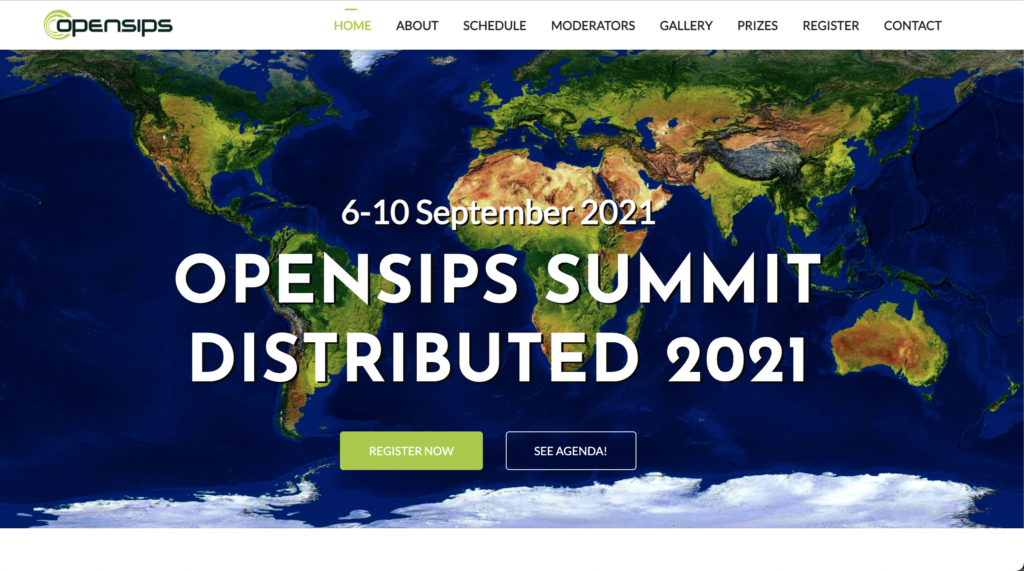The purpose of this CXTech Week 30 2021 newsletter is to highlight, with commentary, some of the news stories in CXTech this week. What is CXTech? The C stands for Connectivity, Communications, Collaboration, Conversation, Customer; X for Experience because that’s what matters; and Tech because the focus is enablers.
You can sign up here to receive the CXTech News and Analysis by email. Please forward this on if you think someone should join the list. And please let me know any CXTech news I should include.
Covered this week:
- Element raises $30 Million
- OpenSIPS Summit Distributed 2021
- The Ultimate Disconnect: Your Brand Clashing With Your Outdated IVR
- 8X8 XCAAS
- People, Gossip, and Frivolous Stuff
Element raises $30 Million
Previously Matrix.org (Element.io) in May 2020 raised $4.6M, as covered in CXTech week 22 2020. Just over one month ago competitor Wire raised $21 million as reported in CXTech Week 16 2021. With this raise the focus is now growth.
The round is led by Protocol Labs (the creators of libp2p, IPFS, Filecoin and more) alongside Metaplanet – the investment fund set up by Jaan Tallinn, co-founder of Skype. Automattic and Notion are also participating in the round, doubling down on their existing investments in Element. These are all well-informed strategic investors, focused on the long term impact of Matrix, not maximizing the return on a spread sheet.
Here’s a nice interview from 2020 with Amandine and Matthew, from TADSummit EMEA Americas 2020.
OpenSIPS Summit Distributed 2021
Thank you Bogdan-Andrei Iancu and the OpenSIPS Project community for welcoming me back on DAY 2, Tuesday 7th September at 1500-1600 GMT.
Looking forward to sharing “Open Source Telecom Survey 2021 Results & Discussion”. I plan to cover:
- This is our 3rd year of the survey, thank you for your continued support.
- We received 114 responses to the general survey, +163 project survey responses giving a total of 277 received.
- The general survey covered: Security, Serverless, STIR/SHAKEN, barriers and benefits of OSS, telcos and OSS, Training, IoT, and general geographic / category info.
- Training: An interesting dichotomy is where people do not expect to pay for training when investigating a project but will pay when the project is part of their business.
- MOOC.org pricing is interesting. It’s free if you just want to learn, if you want the training recognized, then there’s a fee. This enables people to investigate for free, and then if they require support, the training needs to be verified. This avoids training through support 😉
- Open Source telecom software is part of a suite of open source projects used.
- Perhaps we should investigate dominant architectures?
- Companies that use open source make a long-term commitment to building an organization that understands open source, and is committed to owning the product, its roadmap, and the customer experience.
- Companies successful with open source do not happen overnight, they are built over years.
- Documentation, documentation, documentation
- Check out Twilio – but we need to find a way to help solve this industry-wide issue.

The Ultimate Disconnect: Your Brand Clashing With Your Outdated IVR
Great article from Allison Smith on why you want to avoid – at all costs – a “clash” in the image between your website or social media presence and your telephony presence; they should all work together in a cohesive and professional way, offering clients both a clear and accurate depiction of your company *and* your place in your industry.
Too many IVR start with the lie, “our menu has recently changed”. Then there’s a generic list of routing, with often the customer specific routing coming after other process related ones. Take my Dr’s IVR, hospitals and other doctors are given their routing before the patients. And arranging the appointment, one of the few times you do need to talk with the receptionist is the last on the list.
8X8 XCAAS
8X8 gets it, it’s all just programmable communications, APIs on services running on telecom application servers. They could have gone for the acronym CXaaS, that is Communication Experience as a Service, rather than Experience Communications as a Service. BTW there’s even a CXTech newsletter on the topic 😉
If a UCaaS service or a CCaaS service offer APIs to developers to use their service, does that make them a CPaaS? Sort of. Filipe from 8X8 did a great piece on the more focused approach they take to CPaaS: “CPaaS is dead, long live CPaaS.” Kaleyra at TADSummit Americas 2019 made a point of showing how their CPaaS is focused on private, not public, implementations.
The bottom line is any service can expose an API for other parties to consume. It’s how the web works. And in communications, its programmable communications. The term CPaaS was broken from the start, as aggregators already existed and had APIs (more B2B focused) long before the term was coined. It’s become a handle for ‘sort of like Twilio’, well a bit of Twilio’s business, as they sell SIMs, SIP trunking, email marketing campaign tools, 99% of a CCaaS, etc.
People, Gossip, and Frivolous Stuff
João Camarate is now CTO at Broadvoice and GoContact. In CXTech Week 29 2021 we reported Broadvoice has bought CoContact.
Lesia Nikoza is now Senior User Experience Designer at SoftServe.
Pratama Putra is now Technical Lead at tiket.com. He was a winner at TADHack Japan.
You can sign up here to receive the CXTech News and Analysis by email.